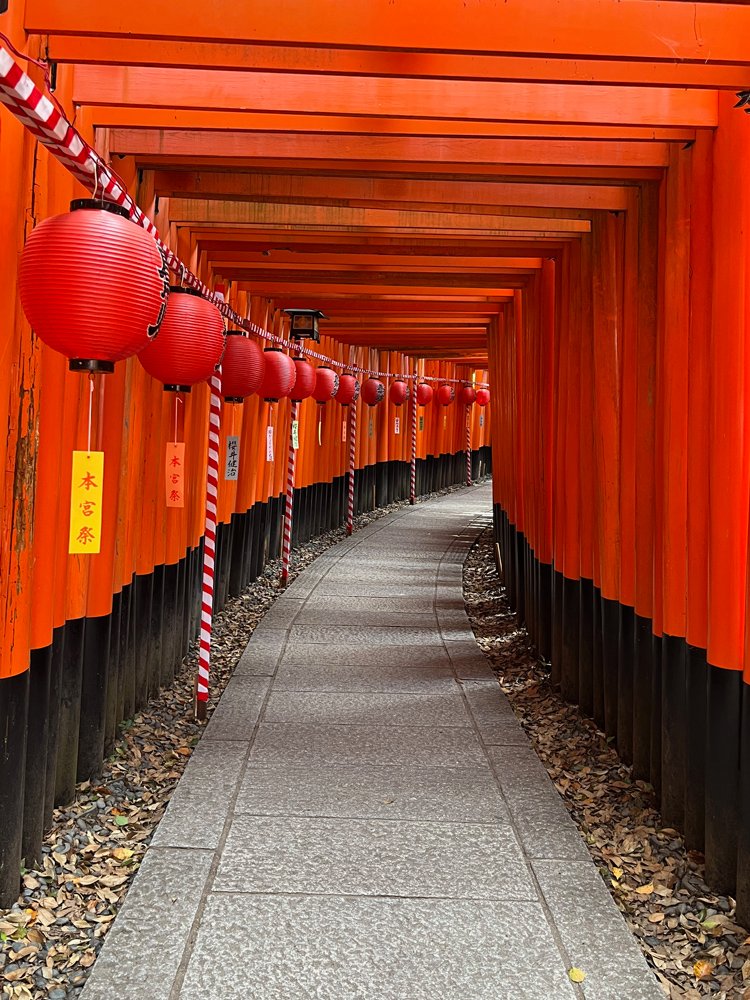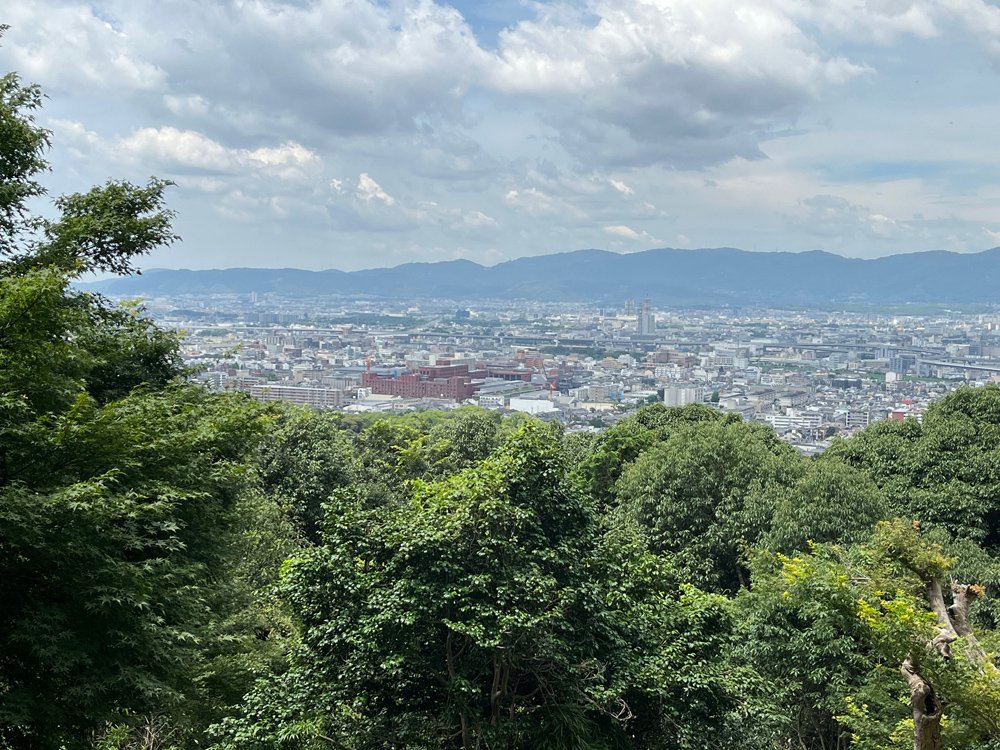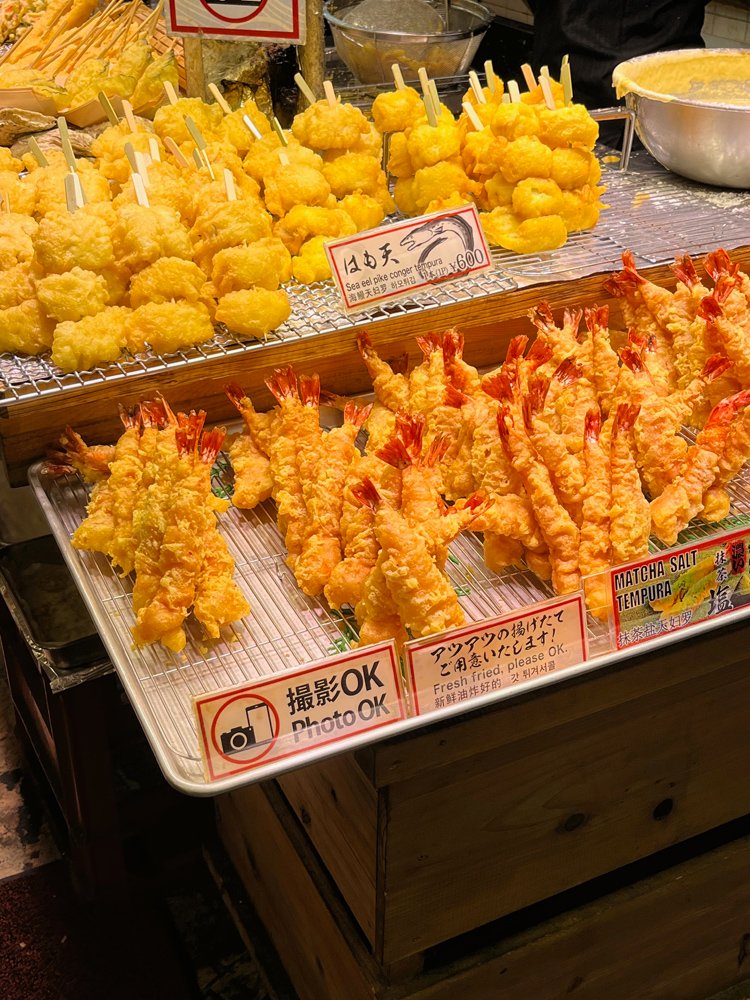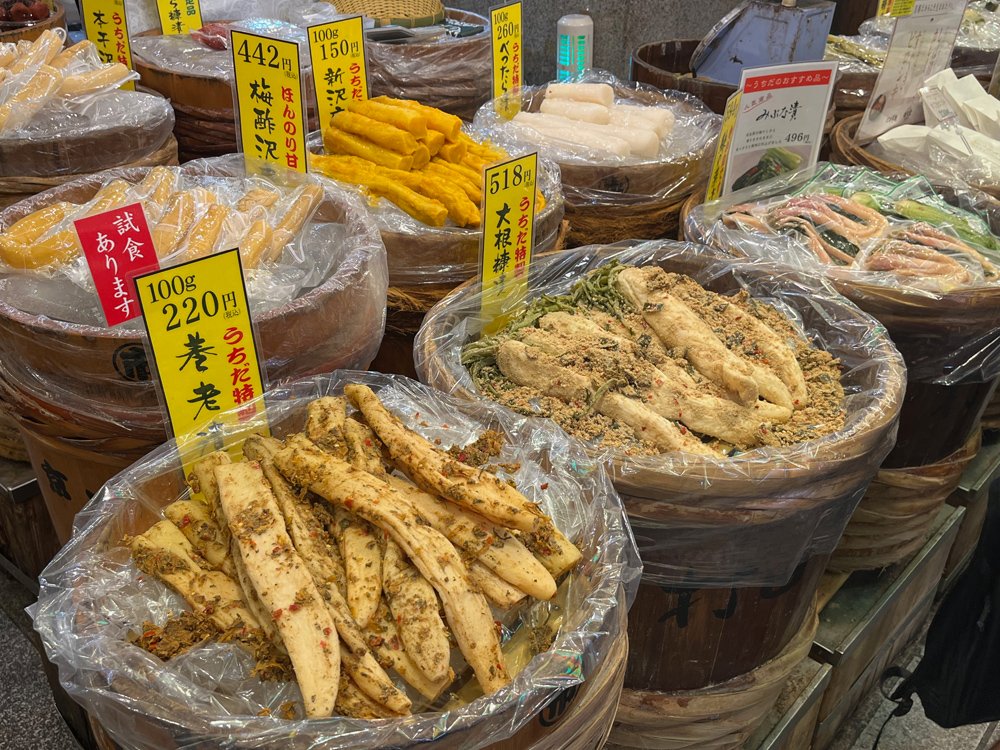Kyoto and Osaka: Where Past and Present Collide
After the dazzling intensity of Tokyo, our journey led us south-west to Kyoto and Osaka — two cities that, despite their proximity, offered entirely different experiences.
Kyoto, once Japan’s imperial capital, felt like a step back in time with its serene temples, centuries-old teahouses and quiet, lantern-lit alleyways. Yet beyond this historic charm, Kyoto also has a sleek, modern side, with a bustling business district that reminds you this is no museum piece, but a city very much in motion.
Osaka, on the other hand, was all boldness and energy, a city that lived loudly, from its neon-lit streets to its legendary food scene. Over the next few days, J and I immersed ourselves in both worlds — wandering through Kyoto’s moss-covered shrines and hidden gardens before diving into Osaka’s vibrant chaos, where every turn revealed another sizzling food stall or lively marketplace.
If Tokyo dazzled with scale, Kyoto and Osaka captivated with their contrasts, proving once again that Japan is a country of endless layers, waiting to be uncovered.
Kyoto Highlights: Shrines, Markets, and a Slice of Tranquility
Fushimi Inari Shrine: A spectacular trail of torii gates

Kyoto welcomed us with another wave of heat and humidity, but that didn’t deter us from visiting the famous Fushimi Inari Shrine. After a short train ride from Shijo Station (the closest to our hotel), we joined what felt like half the world’s population to explore this iconic site. (And we were told that July wasn’t even as busy as autumn or spring!)
The shrine’s thousands of bright red torii gates form a winding trail up the sacred Mount Inari, winding through lush, wooded forest and creating an almost otherworldly atmosphere. Of the many shrines dedicated to Inari, the Shinto god of rice, Fushimi Inari is considered the most significant, with origins dating back to around 794 AD. Scattered throughout the grounds, fox statues — believed to be Inari’s messengers — watch over visitors.



The climb was a workout, especially with the humidity, so we took our time — 500 steps later, we reached a lookout overlooking Kyoto. Although we decided not to continue to the summit (about 25 minutes’ walk further up), the journey was worth every drop of sweat!
Being such a popular site, capturing photos sans people was a challenge. But with patience — and a few quick snaps as visitors rounded corners — I managed to get a few.
Nishiki Market: Kyoto’s Culinary Heart

I love a good Asian market, so discovering one just a few minutes’ walk from our hotel was a delight. Late one afternoon, I set off alone for a leisurely stroll to Nishiki Market, a narrow five-block pedestrian shopping arcade packed with food stalls and specialty shops selling everything from chopsticks to ceramics and clothing.
The market was a feast for the senses — the aroma of grilled seafood, the sight of colourful (and sometimes unidentifiable) produce, and the sounds of vendors calling out to customers created a vibrant atmosphere.



![Not so sure about the squid, though! [Perhaps cooked would be better]](https://intermezzoadventures.com/wp-content/uploads/2025/01/Nishiki-Market-Kyoto-4.jpg)

I couldn’t resist sampling an enormous deep-fried prawn and a tiny glass of sake — both delicious and astonishingly affordable at about AUD $1 each. At the far end of the market, I stumbled upon the Nishiki Tenmangu Shrine, dedicated to the god of learning — a quiet reminder of Kyoto’s deep-rooted traditions amid the bustle.
Later, recounting my adventure to J, (as we enjoyed another Matcha Frappuccino at Starbucks 😉), we decided to return to the market together the next evening — she couldn’t miss out on this wonderful experience!
Arashiyama Bamboo Grove: Nature’s Cathedral

Another Kyoto highlight was the Arashiyama Bamboo Grove. The train ride to Saga-Arashiyama Station was straightforward, and the walk through the towering bamboo was breathtaking, even with the crowds. I was surprised that the actual bamboo forest wasn’t particularly large, but it was still undeniably impressive.
Dating back to the Heian Period (794-1185), the bamboo was initially used for practical purposes like basket and mat making. Later, the grove became a spiritual retreat for Zen Buddhist monks, who believed the rustling bamboo whispered ancient wisdom. In Japanese culture, bamboo symbolizes purity, resilience, strength, and prosperity.
As you walk along the path through the grove, the gentle ‘clunking’ of the bamboo — like giant wooden wind chimes — is soothing to listen to, as though they are whispering to each other.

Once again, the heat and humidity were relentless, but an enterprising vendor along the forest trail offered soda milkshakes from the back of his van — a quirky, refreshing treat with a rather curious flavour.
After wandering through the grove, we descended to the Hozu-Gawa River, a serene spot where boats drifted lazily on the water.
The idea of renting a dinghy for a bit of fun on the river was tempting, but with the midday temperature soaring past 35ºC, common sense prevailed.
The walk back to the station, although hot, offered more charming views of this picturesque area.

Kyoto’s Hidden Gem: The towering beauty of Toji Temple
Our original plan for the day had been to visit the Kyoto Imperial Palace, but discovering it was closed on Mondays forced a quick change of itinerary. [Note to self: remember to check opening hours!] So, we retraced our steps to the station and set off for Toji Temple — a UNESCO World Heritage Site renowned for its striking five-level pagoda.

It’s a mystery why more people don’t visit this impressive landmark — it was almost deserted the day we were there. Standing at 57 meters, it’s said to be the tallest wooden building in Japan and has become an enduring symbol of Kyoto.
Originally built in 796 AD, the pagoda has endured multiple fires over the centuries, with the current structure dating back to 1644. Inside the main hall, 21 Buddhist statues — some of the oldest in Japan — stand in quiet reverence, adding to the temple’s profound sense of history.
Kyoto’s Last Surprise: Mayhem, Temples, and Thunder
As our time in Kyoto was drawing to a close, the city seemed determined to leave a lasting impression — whether through unexpected discoveries or sheer chaos. Back at Kyoto Station (after visiting Toji Temple), the usual efficiency of the Shinkansen had given way to bedlam, with frustrated travellers stranded by a derailed maintenance carriage. Thankfully, our route was taking us in the opposite direction, allowing us to slip past the turmoil and retreat to the cool refuge of a restaurant for lunch, away from the relentless heat.
Later in the afternoon, I set off alone to wander through Shijo, hoping to peel back some of Kyoto’s many layers — bustling financial streets give way to quiet back alleys, where I stumbled upon the serene Bukkoji Temple. Still chasing the promise of a famous Zen garden at Kenninji (which I’d read much about), I meandered through narrow residential lanes, past timber houses and unexpected shrines, until the sky darkened with an impending storm.
The elusive Zen garden would have to wait for another visit, as a sudden crack of thunder sent me darting from one awning to the next, racing the storm back to the hotel.
And with that, Kyoto had the last word — a mix of beauty, unpredictability, and just a hint of mischief. Tomorrow, we move on to Osaka. Let’s see what surprises await us there.
Osaka Adventures: Food, Fun, and a Forest Retreat
Dotombori: Nightlife and Ramen
With only a short stay in Osaka, we had to prioritise our activities. The city welcomed us with its lively energy, especially in Dotombori, the city’s famous entertainment district. Neon lights and paper lanterns reflected off the river, creating a dazzling, electric atmosphere.


Market stalls and open-air restaurants lined the walkways, offering an array of tempting street food — but it was the ramen that stole the show. Rich, flavourful, and deeply satisfying, it was the perfect meal after an evening of exploring.
Minoo Park: A thunderous encounter
The next day, we escaped the urban buzz and headed to Minoo Park, a forested retreat about 30 minutes by train from central Osaka. The 3-km trail to Minoo Waterfall wound gently up the hillside, peaceful and mostly quiet, with only a handful of other visitors. In autumn, the maple trees would be spectacular, but even in summer, the park’s beauty and tranquility were undeniable.

Halfway along the trail, a thunderstorm rolled in, delivering one of the loudest claps of thunder I’ve ever heard. Fortunately, we found shelter under a tiny bridge and waited it out. Ever since I had a near-death experience with a ground-striking lightning bolt many years ago, I’m ever wary of being caught outside in an electrical storm. But J remained calm and was happy to continue to the falls once the storm had passed.

Post-storm humidity was intense, but we pressed on to the waterfall, which was well worth the effort. As one blog I’d seen had warned, “You will sweat a lot — take a towel”, and they weren’t kidding!

Minoo Falls is not the tallest waterfall I’ve ever seen, but the setting was serene and picturesque. And the matcha ice cream we treated ourselves to afterward? Absolutely delicious!
Ten Summer Days in Japan: A Journey Over (but not forgotten)
As J and I parted ways, each heading to our own airport — she to one, I to another — it struck me how fitting an ending this was to our shared adventure. Travel, like life, is a series of meetings and partings, connections made and then loosened as we follow our own paths.
My own journey ended on a whimsical note: the Haruka Express to Kansai Airport, its carriages adorned in cheerful Hello Kitty motifs. A lighthearted farewell from Japan, a country that so effortlessly blends tradition with the unexpected.

Looking back on these ten summer days in Japan, I see a mosaic of moments — lantern-lit streets, steaming bowls of ramen, the hush of temple gardens, the hum of city life, and the quiet companionship of a well-matched travel friend. Japan offered contrasts and surprises at every turn, and as always, it left me with stories to tell and an urge to return.
Because that’s the thing about travel. It isn’t just about the places we go — it’s about how those places settle into us, how they shape our memories and call us back, again and again.
If you missed Part 1 of “Ten Summer Days in Japan”, you can read it here.
Leave a Reply